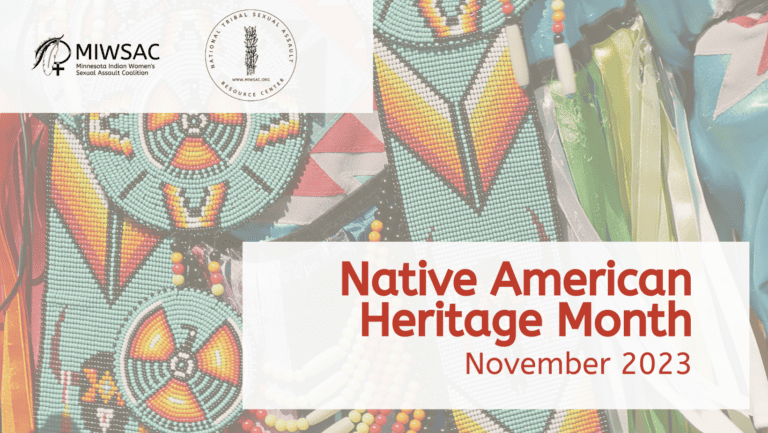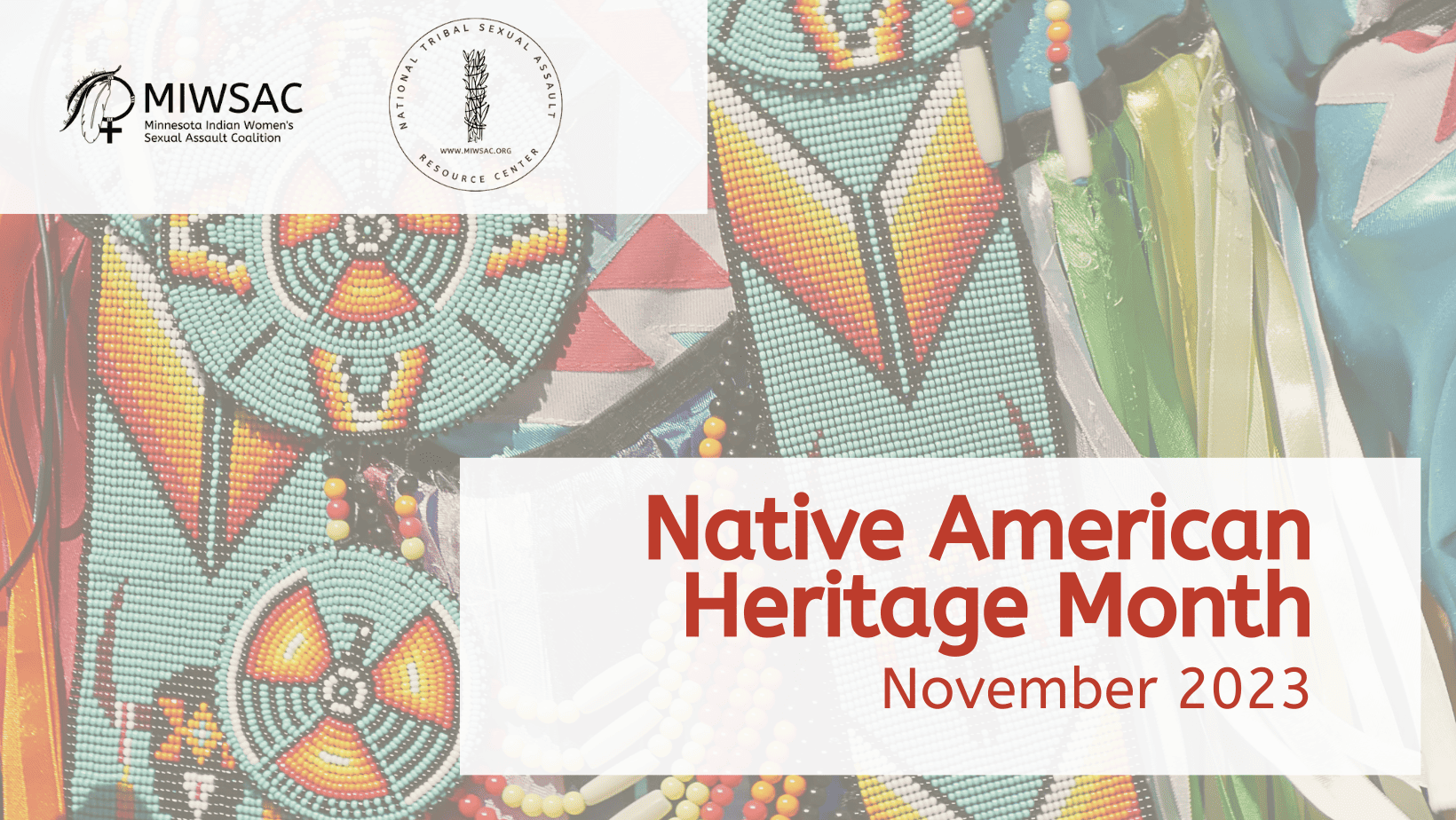
Hello from the National Tribal Sexual Assault Resource Center! November was Native American Heritage Month. While we know that culture and heritage should be part of our day to day life, it was a nice month to highlight the history of our communities and uplift the work of so many. For this month, we wanted to share some thoughts on what Indigenous identity means for our work and movement.
We know that we are connected to each other through blood and through the Earth. It is both so simple and so complicated sometimes to talk about “what it means to be Indigenous.” Enrollment in a tribal nation is a significant aspect of Indigenous identity. It establishes a connection to a specific community, land, and cultural heritage. Enrolled individuals often carry a deep sense of responsibility towards preserving and passing on Tribal traditions, values, and protocols. Often the first question people ask when meeting is a variation of “where are you from?” or “who are your people/who is your family?”. Yet, many people are not enrolled, and non-Native programs in particular need to recognize that enrollment is not the litmus test for Indigeneity. This can be complicated, especially in an age when there are folks who claim to be Native for profit or acclaim. But, many people are limited due to the complicated and differing enrollment requirements, mixed identities, adoption, and other reasons. But, folks can still be Indigenous without being enrolled. The complications of identity can make surviving sexual violence even harder for some, as well as well meaning advocates or others not understanding those complexities.
The narrative of Indigenous identity is evolving, with a growing number of Native individuals living in off Tribal lands. The 2020 Census reveals that 87 percent of those who identify as AI/AN live outside of tribal areas. This would include Urban Indian communities, border communities, rural, and suburban spaces. This is due to many reasons, including forced removal of children, some Tribes having limited housing or employment opportunities, and many other reasons. Urban communities face unique challenges as they navigate the complexities of city life while maintaining a connection to community and culture. Some urban areas have a vibrant Native communities but many do not, which leaves survivors of sexual violence often engaging with non-culturally specific service providers and systems.
Beyond the identities discussed, some folks may identify strongly with their specific tribal traditions, some may have been raised in communities that are not blood but are home, while others may resonate with a broader pan-Indigenous identity. We have many relatives who are multiple races or multiple cultures. We also know that forced removal of children and other reasons have caused many to feel unsure of their own identity or standing of their Indigenieity. Acknowledging and respecting this diversity is fundamental for advocates in the anti-sexual violence movement. Tailoring resources and support to encompass the myriad ways Indigenous individuals define their identity ensures that survivors receive comprehensive and empathetic care.
Understanding the complexities of Indigenous identities is integral to creating a more inclusive and effective anti-sexual violence movement. Advocates must recognize that survivors may navigate multiple layers of identity, and their experiences are shaped by the intersections of culture, gender, and community ties. By incorporating a culturally competent approach, including access to culture, humor, values, and representation, advocates can build trust within Indigenous communities, fostering an environment where survivors feel heard, understood, and supported.
In November and beyond, it is important to uplift the strength of our Tribal communities and Indigenous people. Recognizing the diverse identities of Indigenous people is a crucial step in creating a more inclusive and responsive anti-sexual violence movement. By embracing the multifaceted nature of Indigenous identities, we pave the way for a future where survivors receive the respect, understanding, and support they deserve.


